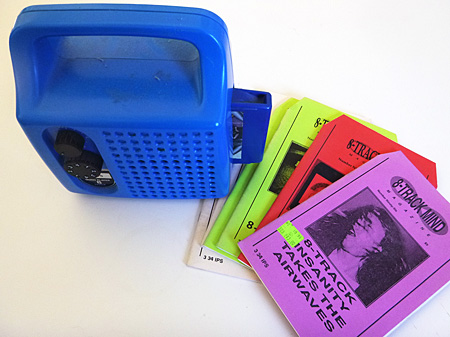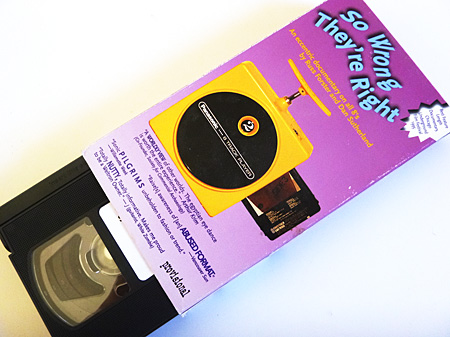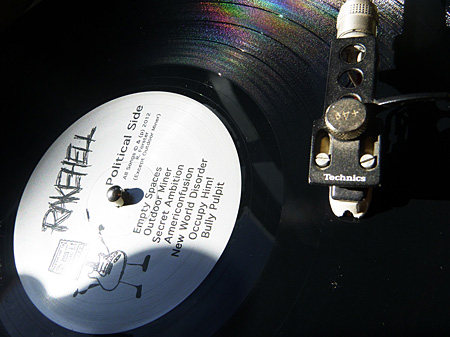INDIVIDUAL: IS Agent F.R. “Russ” Forster
GROUP SIZE: 4.6 million units in 2012 (up 17.7% since 2011) representing (our guess of) 1.6 million consumers
NATURE OF GROUP: indie-hipsters, club-kids, baby-boomers, throw-backs and forward-thinkers
INCIDENCE OF SOCIOMETRY: Birth, Death And Rebirth In The Analog World
Part 1: BIRTH
“Lateral-cut disc records were developed in the United States by Emile Berliner, who named his system the “gramophone”, distinguishing it from Edison’s wax cylinder “phonograph” and Columbia’s wax cylinder “graphophone”. Berliner’s earliest discs, first marketed in 1889, but only in Europe, were 5 inches (13 cm) in diameter, and were played with a small hand-propelled machine. Both the records and the machine were adequate only for use as a toy or curiosity. In the United States in 1894, under the Berliner Gramophone trademark, Berliner started marketing records with somewhat more substantial entertainment value, along with somewhat more substantial gramophones to play them. Berliner’s records had poor sound quality compared to wax cylinders, but his manufacturing associate Eldridge R. Johnson eventually improved them. Abandoning Berliner’s “Gramophone” trademark for legal reasons, in 1901 Johnson’s and Berliner’s separate companies reorganized to form the Victor Talking Machine Company, whose products would come to dominate the market for many years.
In 1901, 10-inch disc records were introduced, followed in 1903 by 12-inch records. These could play for more than three and four minutes respectively, while contemporary cylinders could only play for about two minutes.”
~ Wikipedia: “Gramophone Record”
My own adventure with Long Playing records (as 12” Gramophone records came to be known after the 1930s) started in the mid-1980s when I decided to start a record label named “Underdog Records” to put out records by some Chicago bands I was friends with. I rushed headlong into a world I had only known before as a consumer, naïve and fearless. Through shear determination and a willingness to make plenty of mistakes along the way, I was able to put out six LPs, one 12” EP, and a handful of 7” records before I let a collective of bands and fans take over the label in the early 1990s.
By the time I gave up Underdog, I was disillusioned about the music business, the record distribution business, and the rapidly accelerating move from analog to digital formats for a majority of music consumers. I felt a bit burned by several early Underdog bands getting “deals” with a label started by a couple of seedy coke-snorting music industry types; I got sick of having to deal with Mafiosos and flakey slackers posing as indie record distributors to get paid; and I bought into the conspiracy theories that CDs were just a transparent effort for Major Labels to get a gullible public to re-buy all the music they already owned at double the price.
Disillusioned, I walked away from vinyl at about the time LPs were declared deceased by the music industry, unsure of whether I wanted to ever put out a record again. As luck would have it, I ended up being part of a group of ne’er do wells who started a small press magazine (“‘zine”, if you will) as an act of satire against the push toward digital. We called the ‘zine 8-Track Mind and devoted it to the promotion of the 8-track tape as the ultimate fun music format. We had no idea of where this crazy underground experiment would take us.

Above: A selection of issues from the 101 run of 8-Track Mind with a Sears Mono-8 player.
Below: Agent Forster’s corresponding documentary So Wrong Their Right on VHS (obviously).

Part 2: DEATH
“Ever since the mid-Sixties creative boom in long-playing records spearheaded by the Beatles and Beach Boys, the album has been the model by which any musical artist is measured. That may be about to change.
The album has endured changes in format (vinyl to cassette to CD), length (40 minutes on vinyl, today many extend to 70 minutes) and sound quality (mono to stereo to digital). Throughout, its concept has remained much the same. The ‘digital revolution’ – mp3 players, iTunes, song-swapping – is set to alter all that. And, as we have seen in virtually every recent musical revolution (Napster, The Grey Album, internet CD sales and so on) the music industry is slow to react.
The key change is in the way consumers listen to the music. At the primary level of exposure, the listener no longer relies solely on commercial radio or on the blind shelling out of a tenner for the latest LP. Digital downloads from iTunes, Napster and their competitors offer singles, album tracks, live recordings and other tracks side-by-side, available for the consumer to cherry pick.”
~ Spiked E-Magazine, 11/22/05
As 8-Track Mind Magazine was building some serious underground steam in the early 1990s, the Music Industry was pushing CDs in and LPs out in much the way it had done for 8-tracks vs. cassettes in the 1980s. Impossible claims of indestructibility and music reproduction superiority were heaped upon CDs in articles and ads, and 8-TM staff and contributors took a jaundiced eye and pen to the proclaimed perfection that we considered “seedy”. And while vinyl was the intended target of the Record Companies, the fatal wound was actually sustained over the course of the decade by compact cassettes once CD players replaced cassette players in car stereos.
But certainly vinyl took a great hit, and got hit even harder in the ‘00s as iPods and 99¢ Mp3 singles captivated the imagination of a new generation and trickled up to an older one. In a quirky and unexpected outcome of the format wars of the past two decades, 8-track tapes became collectible (thanks a lot, eBay!) and by the end of the 1990s 8-Track Mind stopped being the screams from the audio basement it started out as and was subtly morphing into a mouthpiece for the collector market. As editor/publisher I was finding myself increasingly alienated by the pressure to create price lists and engage in real moneymaking, and my own personal love for the ugly duckling format became less reflected in the pages of 8-TM.

A wall of 8-tracks at the IS home office. (In the mid 90’s IS agent m[i]le[s] was pulled into the apartment of agent Vollmer to watch So Wrong Their Right. The Compound (IS spiritual birthplace in San Diego’s Hillcrest neighborhood) was already the location of weekly 8-track dance parties. After the viewing, agent m[i]le[s] began an analog correspondence with agent Forster that eventually resulted in multiple cross-submissions to each others projects and culminated in PRO a Chicago banjo and trash-can street-band covering 8-track era heavy-metal and punk classics. ~ IS ed.)
So I shut the magazine down in 2000 and walked away from the 8-track “scene” while I could still do so without animosity. Certainly there were those who thought I was crazy to step away from “success”, but to cash in on the collector scene would have been too antithetical to the original “8-Noble Truths Of The 8-Track Mind” (which were concerned far more with fun and fraternity than with profit) for me to bear. My 8-track and LP collections became my own quiet personal seawall against the accelerating digital tsunami (which ironically I also participated in somewhat begrudgingly as music I wanted to listen to became impossible or prohibitively expensive to obtain on vinyl).
It cheered me somewhat that some of my favorite indie rock labels like Touch & Go and Matador and Sub Pop were still offering reasonably priced LP versions of many of their artists’ works, and I secretly applauded the dance DJs who were keeping many small vinyl pressing plants from bankruptcy, but I feared this underground support would not sustain long-term.
Part 3: REBIRTH
“As counterintuitive as it may seem in this age of iPods and digital downloads, vinyl — the favorite physical format of indie music collectors and audiophiles — is poised to re-enter the mainstream, or at least become a major tributary.
Talk to almost anyone in the music business’ vital indie and DJ scenes and you’ll encounter a uniformly optimistic picture of the vinyl market.
Pressing plants are ramping up production, but where is the demand coming from? Why do so many people still love vinyl, even though its bulky, analog nature is anathema to everything music is supposed to be these days? Records, the vinyl evangelists will tell you, provide more of a connection between fans and artists. And many of today’s music fans buy 180-gram vinyl LPs for home listening and MP3s for their portable devices.
“For many of us, and certainly for many of our artists, the vinyl is the true version of the release,” said Matador’s Patrick Amory. “The size and presence of the artwork, the division into sides, the better sound quality, above all the involvement and work the listener has to put in, all make it the format of choice for people who really care about music.”
~ Wired Magazine, 10/29/07
It defies logical explanation, but now in 2012 vinyl is not just staying alive on life support but is actually thriving! With every passing year LPs present a measurably increasing share of all physical music format sales. Vinyl has a new generation of fans who weren’t even alive when it was declared “dead” in the 1990s. The rise of Mp3s has actually done more to diminish CD than LP sales, in a highly ironic turn of events. Even used LPs retain value much more readily than used CDs

The Rise and Fall of Music Delivery Formats ~ by reddit user Dwellonthis
In 1996 I decided after half a decade of absence from the recording studio to write some new songs and tiptoe back in as an “extreme” solo artist, doing all playing, drum machine programming and singing myself. My first experiments proved to be quite unsuccessful, and disappointed I put recording aside in favor of my film/video and ‘zine efforts.
But the urge to get my music on tape (or hard drive) raised its head again a half decade later in 2001, when as part of a tour promoting my video Tributary (chronicling the tribute band “scene” in the US in the 1990s) I ventured into ace engineer/producer (and editor of the amazing DIY recording magazine Tape Op) Larry Crane’s Jackpot studio and recorded four songs in one day of fast and furious recording.
One of the efforts from those sessions turned out well enough that I vowed to get it on an LP within the next decade. It took me another 5 years to get back in the studio to record tracks for the debut LP by RAKEHELL (my extreme solo project), and another half decade plus to finally get everything mixed and ready for public consumption, but now at this very table you can see a tangible bit of proof that vinyl has not died; my own modest effort to keep analog alive in the 21st Century.

———
ThIS report was originally published on a tri-fold display at iSFair 2O12.

RAKEHELL performing live at iSFair 2O12

———
















